“She Used the Bedroom the Way James Bond Used A Beretta.”
That was the headline of a 2016 Daily Mail article (and a 1963 Time magazine article), and it grabbed my attention (just like any good headline should).
“She” was American-born Betty Pack a.k.a. “Cynthia,” one of British Secret Intelligence Service’s (SIS) and the American Office of Strategic Services (OSS) most productive spies during World War II.
Cynthia used her charm, beauty, and intelligence to extract top secret and vital information from diplomats, military personnel, and any man targeted by SIS and MI6. Cynthia’s weapon wasn’t a gun. It was sex, and her office was a bed, divan, blanket, or any other suitable platform. After seducing a Polish foreign office official, she said, “Our meetings were very fruitful, and I let him make love to me as often as he wanted, since this guaranteed the smooth flow of political information I needed.”
So, who was this dangerous woman and why do we remember Mata Hari from World War I but not Cynthia from the second world war?
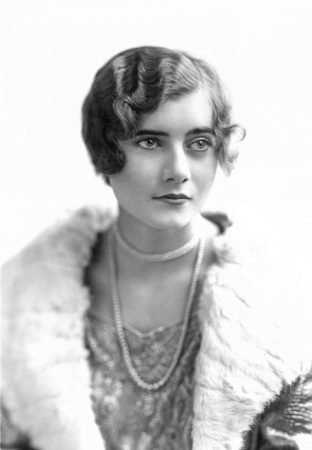
Did You Know?
Did you know that the iconic French baguette has earned another major distinction? What we all know is that the French baguette is envied around the world as the best tasting bread in the world (that is, unless you’re addicted to raisin bread like my 93-year-old father). Second, there are several rules a French baker must follow for baking baguettes and if you don’t follow the rules, you are not allowed to call it a “baguette.” (These are some of the more than four hundred French “Norms,” or regulations.) In 1920, the classic baguette was standardized at 80cm (30in.) in length and 250g (8oz) in weight. Only three ingredients can be used: salt, flour, and yeast (I think water is okay as well). Outside those boundaries will preclude a baker from marketing their bread as “baguettes.” The baguette is uniquely French (more than sixteen million are baked daily) and it is often said that it originated when ordered by Napoléon for his troops to easily carry with them into battle.
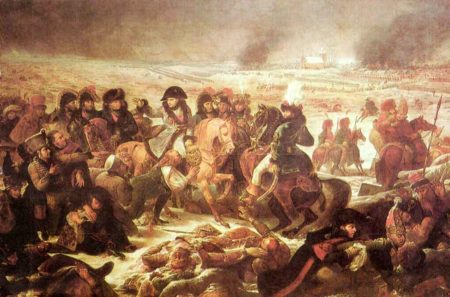
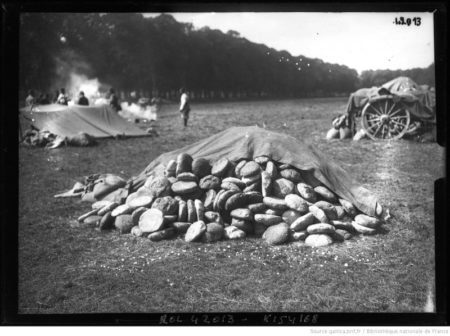
The humble (but government regulated) baguette was recently added to UNESCO’s “intangible cultural heritage” list. It joins traditional tea making in China and the Korean mask dance on the new 2022 UNESCO list. The head of UNESCO says the baguette “celebrates the French way of life. The baguette is a daily ritual, a structuring element of the meal, synonymous with sharing and conviviality. It is important that these skills and social habits continue to exist in the future.” Hard to argue that.
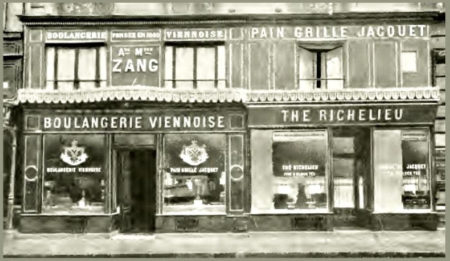
However, the most important UNESCO reminder of the sacred baguette is never to cut the baguette with a knife or place the baguette upside down on the table. (You must use your fingers to break off a piece.) Unless you are offered a bread plate (highly unlikely), you are to put your piece of the baguette on the table and unless you are at a very formal dinner, it’s okay to sop up the escargot garlic and butter sauce with your bread. However, you should never use your fingers when sopping ⏤ use your fork to spear your baguette chunk. And do not take that first bite of the baguette until the first course is served.
But remember, a croissant is not bread. French toast is not French. Only the French baguette is Le vrai McCoy.
Amy Elizabeth Thorpe
Amy Elizabeth Thorpe (1910−1963) was born in Minneapolis, Minnesota. Her father, George Cyrus Thorpe (1875−1936) was an officer in the United States Marines Corps while her mother, Cora (1881−1954), was the daughter of a Minnesota state senator. The family was constantly on the move due to her father’s oft changing duty assignments. (The family lived in Guantánamo, Cuba throughout World War I.) After living in France where she learned to speak fluent French, the family settled in Washington, D.C. and her mother made it a point to introduce Amy to east coast society.
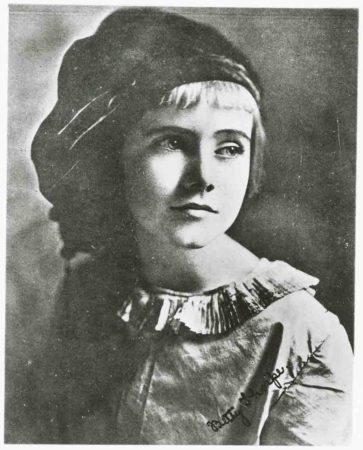
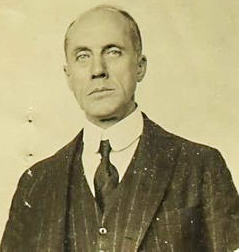
At the age of fourteen, Amy had her first sexual encounter with a twenty-year-old man from Newport. After this, she began numerous affairs with diplomats and others. One of her early “conquests” was Arthur J. Pack (1891−1945), a second secretary in the British embassy and nineteen years older than Amy. She became pregnant around that time, and it was uncertain who could claim to be the father. Betty’s parents forced her to marry Pack and it became a loveless marriage. Her son, Anthony George Pack (1930−c.1952) was born in England but not knowing who the father was, the couple immediately placed him in a foster home. (Four years later, Betty’s daughter, Denise Avril Beresford Pack, was born.)
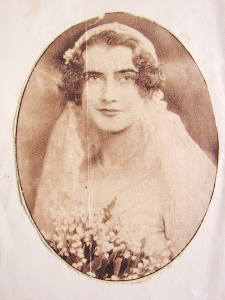
Over the years, Betty Pack would be known as Amy Thorpe, Betty Thorpe, Elizabeth Thomas, Elizabeth Pack, Amy Elizabeth Brousse, Amy Brousse, Amy Elizabeth Thorpe Pack Brousse, and of course, Cynthia.
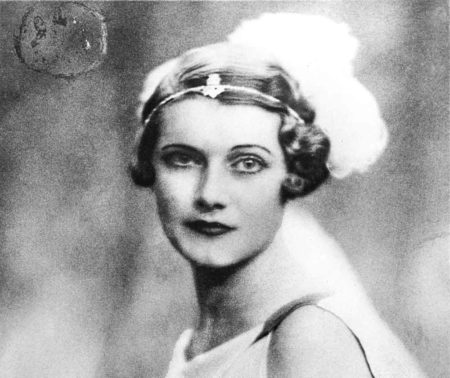
Spain
On the eve of the Spanish Civil War, Arthur Pack was transferred to Madrid where Betty supported Gen. Francisco Franco and his nationalist forces (who were also supported by Hitler). While in Spain and subsequently, Chile, Betty had an affair with a Catholic priest as well as other British diplomats. During this time (which she called her “vagabond years”), Betty began to hone her skills for gathering intelligence. She arranged for the release of political prisoners in Spain as well as downed airmen. Toward the end of Arthur’s post in Madrid, Betty was recruited by a Valencia-based British diplomat to unofficially spy for England. By this time, Betty was anti-Fascist and “all in” to assist Britain. Her next step would become more dangerous.
The “Honey Trap”
This is an espionage term describing an operational practice in which a covert agent utilizes a romantic or sexual relationship to compromise a target for valuable intelligence.
Poland
In 1938, Arthur and Betty moved to Poland where he took up his new senior diplomatic post. Despite Betty knowing she did not love her husband, she continued to function as a diplomat’s wife entertaining foreign dignitaries. British intelligence began to take notice of this young and attractive woman who would shortly begin to pay dividends by employing the world’s two oldest professions: spying and sex. (Betty later said she had no regrets about combining the two; “Wars are not won by respectable methods.”) She began her habit of typing up her “conversations” after each sexual encounter and sending the manuscript to London via a diplomatic pouch. Her descriptions were vivid enough to attract and hold the attention of all readers. (By the summer of 1941, the head of SIS was complaining about the volumes of her reports.)
She met Edward Kulikowski (1908−1972), a young Polish foreign service officer, and began an affair that yielded secret information about Hitler’s intent to annex Czechoslovakia and that Poland was secretly working with Germany. With this information, Betty approached John Shelley, head of intelligence at the British embassy in Warsaw. Shelley immediately recruited an eager Betty Pack into MI6.
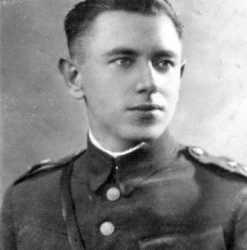
Arthur was sent back to England after suffering a stroke and Betty was ordered to make contact and begin an affair with Count Michał Łubieński (1896−1967), right-hand to Józef Beck (1894−1944), the Polish foreign minister (despite being married, Beck also fell under Betty’s charms). It was the “honey trap.” The newly recruited spy rummaged through the count’s briefcase, suitcase, and other important satchels while taking photos of documents. Once again, Betty would type up her meticulous reports and send them on to London where they would be devoured by an anxious male audience. It was during her tryst with Łubieński that she learned the Polish military had cracked the code for Germany’s enigma machine. After relaying that information onto London, the British convinced Poland to work with them and without their assistance, it was unlikely Alan Turning and his team at Bletchley Park could have cracked a more sophisticated version.
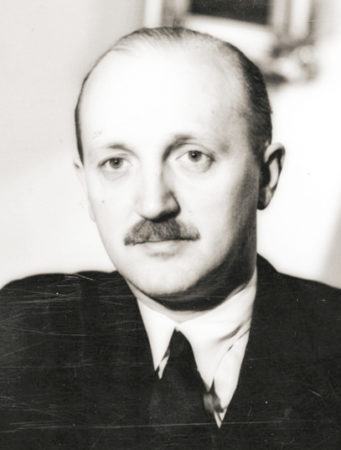
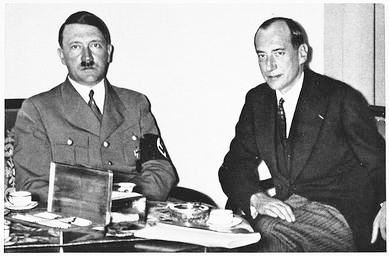
One more job in Poland awaited Betty before she and Arthur moved to Chile in September 1938. Betty traveled to Prague where she broke into the office of Konrad Henlein (1898−1945), leader of the pro-Nazi Sudeten German Party. She managed to steal a map detailing Hitler’s three-year plan to invade central Europe. She hid the map in her underwear before delivering it to London.
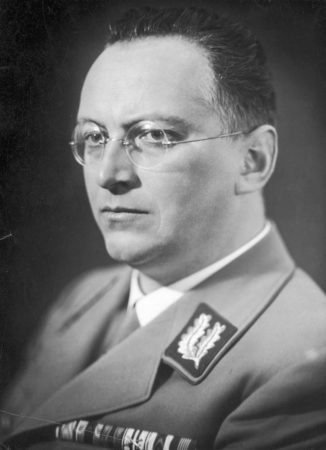
Chile
While in Chile, Betty wrote anti-Nazi articles for the paper La Nacion under the journalistic name, Elizabeth Thomas. World War II began on 1 September 1939 and Betty decided to leave her husband and return to Washington, D.C. Her SIS handlers encouraged her and suggested posing as a freelance journalist which they knew would open doors for her. Betty obtained a job with the highly secret British Security Coordination (BSC), a subsidiary unit of SIS−MI6 and Britain’s American intelligence arm. Her new boss was William Stephenson (1897−1989) who gave her the code name: Cynthia.
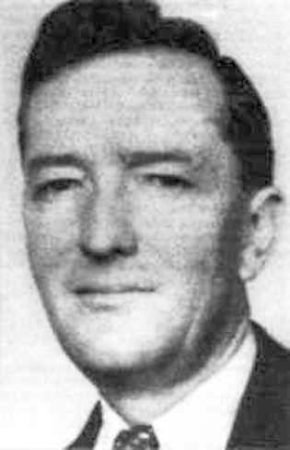
British Spy
Stephenson (code name: Intrepid) was highly regarded by Winston Churchill and King George VI and he is considered to be one of Ian Fleming’s models for the fictional character James Bond (click here to read the blog, James Bond’s Lover). While BSC had its headquarters in room 3603 at Rockefeller Center in New York, Cynthia lived on O Street in Georgetown. The house had a secret exit in the back that served its purpose when she “entertained.” (Reportedly, Cynthia was successful in convincing the leading isolationist senator, Arthur Vandenberg (1884−1951), to vote for the Lend-Lease legislation in March 1941.) Stephenson knew his new spy was special and he had no reservations assigning her dangerous missions and Cynthia never let him down.
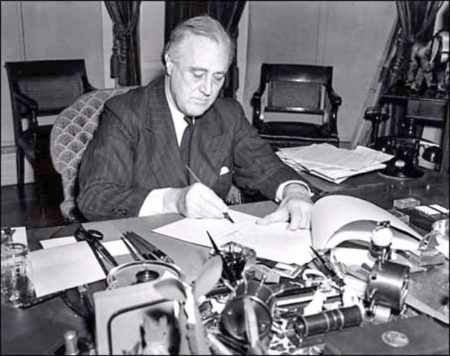
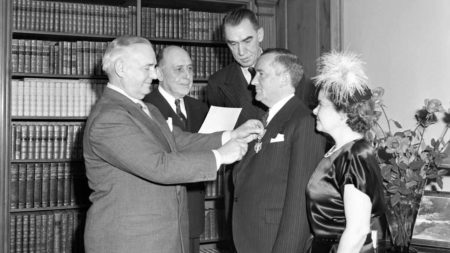
Her first big assignment was to obtain the Italian naval codes. To accomplish this, Cynthia set the “honey trap” to catch Alberto Lais (1882−1951), an old friend from her days in Poland. Lais was now part of Italy’s Naval Intelligence and running Mussolini’s spy network in the United States. Lais and Cynthia never consummated their relationship. She would undress, lie down, and allow Lais to fondle her while divulging secret intelligence information including the naval codes. Over time, this story has changed with Lais giving Cynthia false information. It is likely she bribed a clerk to obtain the codebooks. One way or the other, the real codes made it to the appropriate people in London and the Italian navy was neutralized for the remainder of the war. (Just to make things more complicated, it is thought the Italian codes were broken by Bletchley without using the codebook ⏤ real or fake.) One thing is certain. After Lais left her place, Cynthia immediately began transcribing the conversations along with the “methods” she used to extract the information.
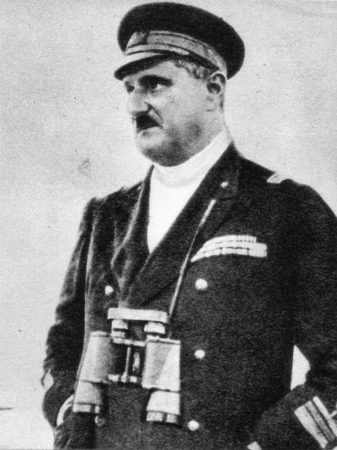
Cynthia’s next assignment would secure her reputation and place in history as a great spy.
The Georgia Safecracker
Stephenson thought Cynthia did such a good job on the Italian mission that his next assignment for her was to infiltrate the French Vichy embassy. Her mission was to obtain intelligence on Vichy. Her target was Charles Brousse (1882−1981), a happily married man and Vichy’s press attaché to Washington. Cynthia posed as a pro-Vichy journalist, and it didn’t take long for her to seduce her targeted “victim.” Brousse was having second thoughts about Hitler and Vichy (in particular, Pierre Laval, the Vichy prime minister). It wasn’t hard for Cynthia to recruit Brousse over to the Allies. By July 1941, Cynthia had confessed to her lover the role she played as an Allied spy and that she was willing to pay him for information. (Brousse was demoted around this time, so the offer of money was opportune.) Although the two had fallen in love with one another, she made it very clear to Brousse that her loyalty was to the BSC. He continued to feed her with intelligence and in May 1942, Cynthia was given orders to steal the Vichy naval codes. Brousse balked. However, when Cynthia gave him an ultimatum (“I will either work alone or with someone else who will help me.”), Brousse acquiesced and came up with a plan.
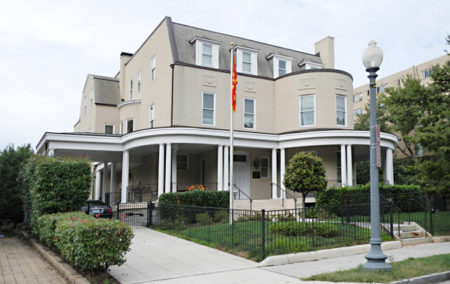
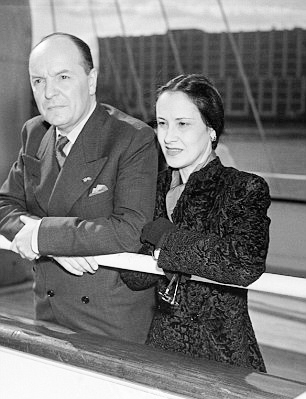
The codes were kept in a safe in the embassy and only the chief cipher officer and his assistant had access to the room and its safe. Over time, Cynthia and Charles softened up the night guard. They convinced him to allow them to use the building for their late-night rendezvous. Making sure their love making was loud and passionate, the guard believed he was helping the two lovers. One night, Cynthia gave the guard and his dog champagne laced with sleeping pills. While the guard was asleep, the spies allowed a professional OSS safe cracker known as the “Georgia Cracker” into the room. The first two attempts to crack the safe failed.
On the third night, Cynthia sensed the guard was becoming suspicious. She and Charles stripped and began making love when all of a sudden, the guard burst unannounced into the room. Thoroughly embarrassed, he left and the Georgia Cracker entered. This time he was successful, and Cynthia was able to photograph the codes and replace the codebooks as if nothing was amiss.
The codes were used to decipher Vichy’s naval communications and are credited for the success of the Allied invasion of North Africa in November 1942 when the men met virtually no enemy resistance.
The last person to whom you say goodnight is the most dangerous.
⏤ Warning passed on to CIA trainees about the perils lurking in the bedroom. (Epigraph from The Last Goodnight)
Caught
Sometime after the success of delivering the Vichy cipher books, Cynthia and Charles were caught in bed by his wife, Catherine. She began to scream that Betty/Cynthia was an American spy. The screams were so loud that others heard the revelation and Betty’s days as a spy in Europe were over.
Cynthia wanted to go into France as a spy, but her request was turned down. Her cover was blown and she was too well-known in international spy circles at this point. Although Betty and Charles went to France after its liberation in 1944, the couple were effectively “retired” from the spy business.
The greatest unsung heroine of the war.
⏤ Gen. “Wild Bill” Donovan
Chief of Office of Strategic Services (OSS)
Commenting on Betty “Cynthia” Pack role as an Allied spy.
Post War
They were the happiest days of my life.
⏤ Elizabeth Brousse (a.k.a. Cynthia)
Betty’s response in a letter to H. Montgomery Hyde, a former BSC colleague.
(c. 1962)
One year later, Arthur Pack committed suicide. Brousse divorced his wife and married Betty. (She never divorced Arthur.) Brousse purchased a rundown tenth-century castle in the Pyrenees Mountains and renovated it. Mr. and Mrs. Brousse moved in and lived a quiet life in the Château de Castelnou.

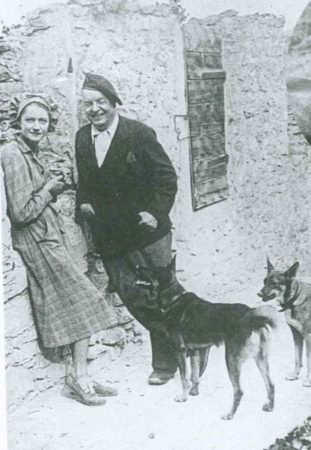
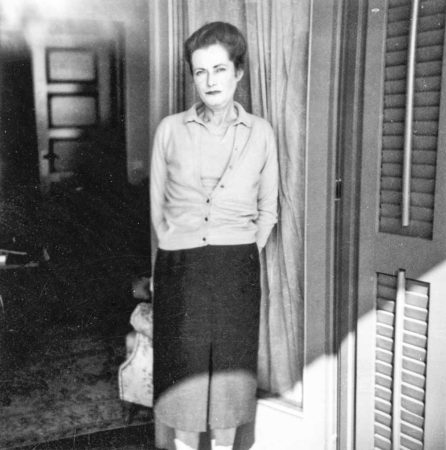
Betty began to write her memoirs but died of cancer of the jaw and throat on 1 December 1963 before completing the book (she was a heavy smoker). The French government granted her permission to be buried under her favorite cedar tree on a discreet section of the château. Her papers were used by H. Montgomery Hyde as the basis for his 1965 biography of Betty (see below). Charles continued to live in the château until his death in 1971 when he was electrocuted by his electric blanket. The ensuing fire destroyed much of the château. The château was abandoned and restored several times. It is now open to the public. Click here to visit the château’s web-site.
Ashamed? Not in the least . . . Wars are not won by respectable methods.
⏤ Elizabeth Brousse (a.k.a. Cynthia)
Betty’s response when asked if she was ashamed of her wartime activities.
(c. 1963)
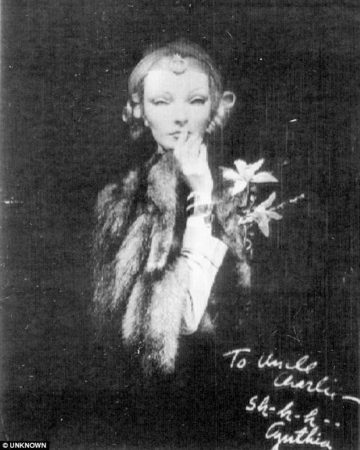
Research Files
Howard Blum wrote The Last Goodnight, a biography of Betty Pack. On his web site (click here to visit the web-site), he talks about some of the difficulties encountered with respect to researching this non-fiction topic. Although Mr. Blum was able to draw on readily available sources, there is still quite a bit of classified information at the National Archives, FBI, and Churchill College where H. Montgomery Hyde bequeathed his files on his wartime spy colleague, Betty Park. (The Churchill College files are officially “closed” until 2041.)
Mr. Blum notes that “In writing narrative nonfiction, (the writer is) guided − by as the name of genre makes dauntingly clear − two essential rules: you need to tell a story; and it needs to be true.” On multiple occasions, he stumbled on two (or more) versions of the same story. So, he decided to go with the one that made the most sense.
I guess in the spy business, it’s not surprising the truth is hard to come by. And it is probably the answer as to why Betty Pack was forgotten, unlike Mata Hari.
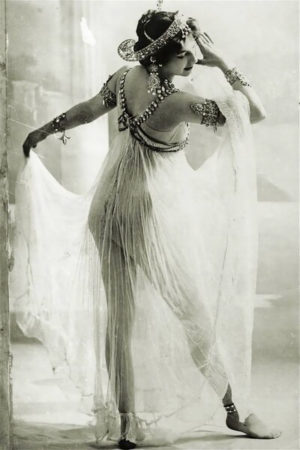
Next Blog: “Powerful Images”
Correspondence and Commentary Policy
We welcome everyone to contact us either directly or through the individual blogs. Sandy and I review every piece of correspondence before it is approved to be published on the blog site. Our policy is to accept and publish comments that do not project hate, political, religious stances, or an attempt to solicit business (yeah, believe it or not, we do get that kind of stuff). Like many bloggers, we receive quite a bit of what is considered “Spam.” Those e-mails are immediately rejected without discussion.
Our blogs are written to inform our readers about history. We want to ensure discussions are kept within the boundary of historical facts and context without personal bias or prejudice.
We average about one e-mail every two days from our readers. We appreciate all communication because in many cases, it has led to friendships around the world.
★ Read and Learn More About Today’s Topic ★
Bates, Daniel. She Used the Bedroom the Way James Bond Used a Beretta. Daily Mail, 5 July 2016.
Blum, Howard. The Last Goodnight: A World War II Story of Espionage, Adventure, and Betrayal. New York: HarperCollins, 2016.
Click here to watch the video How WWII Spy Betty Pack Became a War Heroine.
Hyde, H. Montgomery. Cynthia. New York: Farrar, Straus and Giroux, 1965.
Hyde, H. Montgomery. The Quiet Canadian. London: Hamish Hamilton, 1962.
Jeffrey, Keith. MI6: The History of the Secret Intelligence Service 1909−1949. London: Bloomsbury, 2010.
Lovell, Mary S. Cast No Shadow: The Life of the American Spy Who Changed the Course of World War II. London: Pantheon Books, 1992.
Macdonald, Bill J. The True ‘Intrepid’: Sir William Stephenson and the Unknown Agents. British Columbia: Timberholme Books, 1998.
McIntosh, Elizabeth P. Sisterhood of Spies: The Women of the OSS. New York: Dell Publishing, 1998.
Stevenson, William. A Man Called Intrepid: The Incredible WWII Narrative of the Hero Whose Spy Network and Secret Diplomacy Changed the Course of History. Guilford, CT: The Lyons Press, 1976.
⏤Reportedly, a new movie starring Jennifer Lawrence is planned for the story of Betty Pack based on Mr. Blum’s book.
⏤Mr. Hyde’s book was written in 1965 and is largely based on interviews he conducted with Betty.
Past Blogs About Women Spies and Courtesans Click on the title to read.
Cyndi Lauper and the Naked Princess
American “Grande Horizontale” and Nazi Collaborator
Coco Chanel: Nazi Collaborator or Spy?
The Sussex Plan and a Very Brave Woman
I Was Looking Forward to a Quiet Old Age
Disclaimer:
There may be a chance that after we publish this particular blog, the video links associated with the blog are no longer accessible. We have no control over this. Many times, whoever posts the video has done so without the consent of the video’s owner. In some cases, it is likely that the content is deemed unsuitable by YouTube. We apologize if you have tried to access the link and you don’t get the expected results. Same goes for internet links.
What’s New With Sandy and Stew?
Sandy and I are getting ready for a year of very heavy travel. I don’t think we’ve ever had a schedule like this before with so much crammed into nine months. (We’re trying to make up for lost time due to the pandemic.) Our first trip is mid-March followed by trips in April (Holland), May (Elbe River and Berlin), August (Alaska), September (Paris), October (Suez Canal/Dubai), and then New Year’s Eve on board a Princess ship. Phew. And then, onto 2024.
In-between all of that, we are scheduled to publish the second edition of volume two of Where Did They Put the Guillotine? We will also find the time to publish the second volume of the Nazi-Occupation series.
We’ll use the May trip to Berlin as our initial introduction to the city (neither of us have been to Berlin). We’ll be able to get our arms around the public transportation system and visit some sites we have targeted for the future book, Where Did They Put the Führerbunker? A Walking Tour of Nazi-Berlin (1933-1945). That book will pose some challenges we have not faced in the other books. That is, when a city was ninety percent destroyed, the chances of finding original buildings is slim.
Thank you to all of you who subscribe to our bi-weekly blogs. It seems there isn’t a day that goes by where we don’t increase our readership. Please let your history buff friends and family members know about our blog site and blogs.
Someone Is Commenting On Our Blogs
I’d like to thank several of our friends in the U.K. and Australia for ordering the new book, Where Did They Put the Gestapo Headquarters? Volume One. The cost of postage is far more than the cost of the book but that doesn’t seem to faze their decision.
It is unfortunate that the paper version of my books is only available through Amazon in the United States. Kindle versions are available through Amazon U.K. but frankly, I would prefer to have a hard copy in my hands. I suppose lack of availability has to do with distribution issues. From time to time, I do see hard copies available in the U.K., but these are always sold by third-party vendors. I have no clue where they get the books.
I’m very disappointed that we can’t get our books into the English and French markets. (At least on a cost competitive basis⏤see first paragraph above.) Several of our targeted marketing vehicles are no longer in play because of this. Too bad.
Anyway, let us know if you would like to buy any of the books on a direct basis through us. A personalized message and autograph with a direct purchase. I don’t autograph books sold through Amazon. Send Sandy an e-amil if you are interested.
If there is a topic you’d like to see a blog written about, please don’t hesitate to contact me. I love hearing from you so keep those comments coming.
Do you enjoy reading? Do you have a hard time finding the right book in the genre you enjoy? Well, Ben at Shepherd.com has come up with an amazing way to find that book.
Shepherd highlights an author (like me) and one of their books. The author is required to review five books in the same genre. So, if a reader is interested say in cooking, they can drill down and find specific books about cooking that have been reviewed by authors in that category. Very simple.
If you like to read, I highly recommend you visit Shepherd.com. If you do, please let me know what you think and I will forward Ben any suggestions or comments you might have.
Click here to visit Shepherd’s website.
Click the books to visit Stew’s bookshelf.
Share This:
Follow Stew:
Find Stew’s books on Amazon and Apple Books.
Please contact Stew directly for purchase of books, Kindle available on Amazon. Stew.ross@Yooperpublications.com or Contact Stew on the Home Page.
Please note that we do not and will not take compensation from individuals or companies mentioned or promoted in the blogs.
Copyright © 2023 Stew Ross








Great article Stew !
Like always.
Best regards
Martin
Hi Martin. Always good to hear from you. Thank you for your comment and we’re glad you enjoyed the blog. I always enjoy writing them. STEW
Wow… I’m so glad I did not miss this one! I love true spy stories. This one is indeed monumental in its scope and importance. Betty Pack is a tribute to her gender in more ways than one.. Great job Stew.
Hi Greg, Glad you enjoyed the spy story. I have more coming in a few weeks. Also, greatly appreciated that you forwarded the blog to your many friends. I hope they will enjoy the story and might consider subscribing to our bi-weekly blogs. Talk soon. STEW